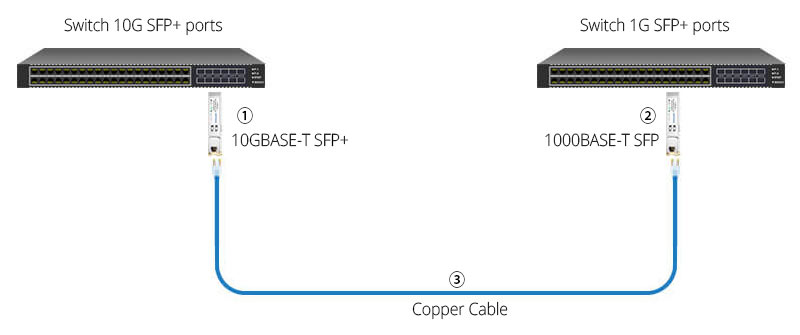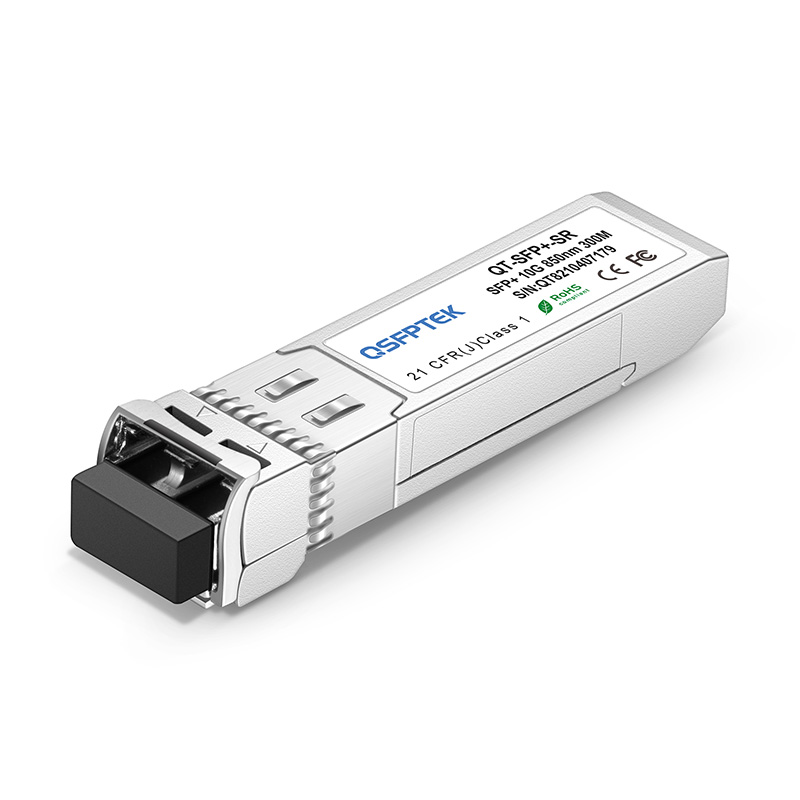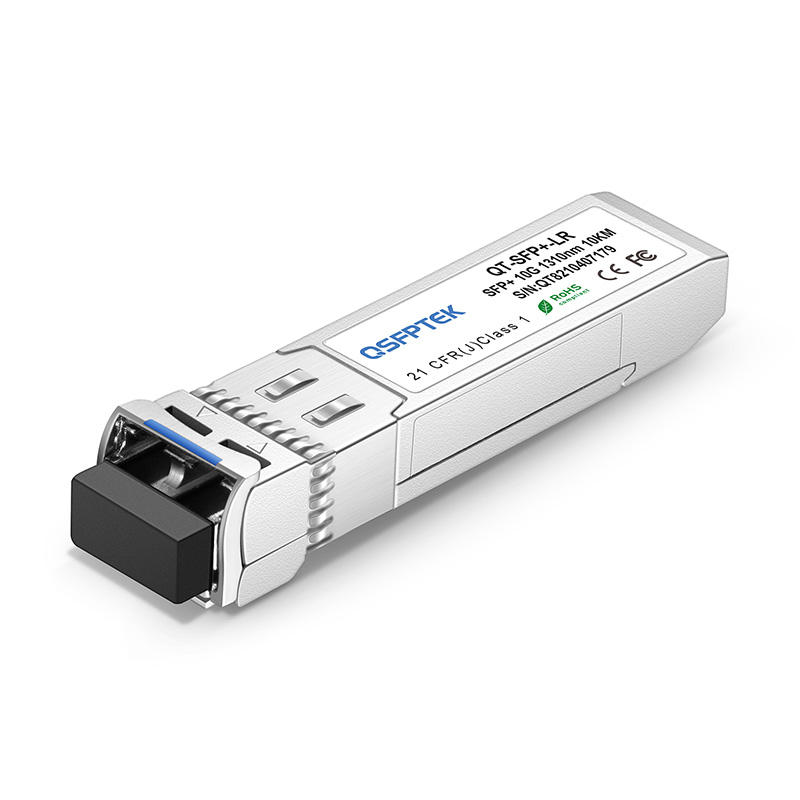SFP vs SFP+ vs SFP28 vs QSFP+ vs QSFP28 Compatibility Guide
The optical transceiver module is a small, hot-swappable network component that plays a crucial role in high-speed data communication. It facilitates converting electrical and optical signals, enabling seamless communication between devices like network switches and routers. Optical transceivers come in various form factors and connector types, including SFP, SFP+, SFP28, QSFP+, and QSFP28, each serving different network requirements. A common question arises regarding compatibility between these transceivers: Can different types work together? For instance, can an SFP module be used in an SFP+ switch port? Or does an SFP+ transceiver support backward compatibility with an SFP module?
This post is an SFP compatibility guide, illustrating the transceiver compatibility issue among the most popular form factors - SFP SFP+ compatibility, SFP28 SFP+ compatibility, and QSFP28 QSFP+ compatibility.
SFP SFP+ Compatibility
SFP and SFP+ compatibility may refer to different issues due to various usage scenarios. Here, we clarify SFP vs SFP+ compatibility from three aspects.
Case 1: SFP Module into SFP+ Port
SFP+ is also called SFP plus, the enhanced version of SFP. SFP and SFP+ are identical in appearance, but SFP+ raises the data rate from 1Gbps to 10Gbps. Is it fully functional to plug SFP optics into SFP+ ports? In most cases, SFPs can work in SFP+ ports but at the cost of sacrificing speed to 1Gb/s. Owing to SFP+ is backward compatible with SFP but not vice versa. However, there is no sure say since it depends on SFP models, networking equipment, and vendors. The author suggests you consult your vendors for exact answers.

① Plug a 1000BASE-SX SFP transceiver into the SFP port on a gigabit switch
② Insert a 1000BASE-SX SFP transceiver into the SFP+ ports on a 10G switch
③ Connect the two modules with an OM3 multimode fiber optic cable to achieve 1Gbps data rate connectivity
Solution Product Lists:
1/2. Cisco GLC-SX-MM Compatible 1000BASE-SX SFP Transceiver Module
3. LC UPC Duplex OM3 Multimode Fiber Patch Cable
Case 2: SFP+ Module into SFP Port
What about the other way around? Can the SFP port take the SFP+ module? Seriously? I doubt no one will do this. Given that 10G SFP+ in an SFP port can not run at 10Gbps. So what is the point of a 10G module inserted into an SFP port? It is more economical and worry-free to use the 1G module directly.
Case 3: SFP+ Module and SFP Module Connectivity
What about the interconnectivity between SFP+ and SFP modules? Can an SFP+ module work with an SFP module? Specifically, if an SFP+ transceiver is inserted into a 10Gb switch and connected to an SFP module in a gigabit switch, will they be compatible? The answer depends on the module type and transmission medium. Most fiber-based 10G SFP+ modules operate exclusively at 10Gbps, meaning they cannot automatically negotiate down to 1Gbps or lower to support an SFP module. However, there are two scenarios where compatibility is possible. First, if the connection between the switches is established over copper cabling, interoperation can work. The 10GBASE-T SFP+ copper transceiver supports auto-negotiation for 10/100/1000Mbps speeds, allowing both ends of the link to match speeds. For example, if a 10GBASE-T SFP+ module is used in a 10Gb switch and a copper SFP module is installed in a gigabit SFP switch, they can communicate successfully when connected using an Ethernet Cat5e cable.

Solution Product Lists:
1. Cisco SFP-10G-T-S compatible 10GBASE-T SFP+ copper transceiver
2. Cisco GLC-T compatible 1000BASE-T SFP copper transceiver
3. Cat5e/Cat6 Ethernet patch cable
Second, the SFP+ optics is a dual-rate 1G/10G SFP+ fiber module, supporting 1G and 10G Ethernet links over SMF or MMF. Vendors such as QSFPTEK provide this kind of dual-rate module, including dual-rate 1000BASE-SX and 10GBASE-SR SFP+, 1000BASE-LX and 10GBASE-LR SFP+, and 10G/25GBASE-SR SFP28. To get a quote, please contact us for the best price and tailored solutions.
Note: Click the price or picture, and you will be directed to the product page.
SFP28 SFP+ Compatibility
The most commonly asked question on SFP28 SFP+ compatibility is - Is SFP28 compatible with SFP+? Generally speaking, the short answer is yes. SFP optics work in SFP+ ports, but not vice versa. Understanding this point, review the relationships between SFP28 vs SFP+. SFP28 (small form-factor pluggable 28) is the enhanced version of SFP+ because it upgrades data rates while inheriting the same package type as SFP+. SFP28 is designed for 25Gb/s data rate transmission, yet it has backward compatibility with SFP+. For example, if plugging an SFP+ module into the switch SFP28 port, the SFP+ module will work well, but the max transmission speed will auto-negotiate down to 10Gb/s.
QSFP28 QSFP+ Compatibility
Now, we step into the high-speed era. Is QSFP28 compatible with QSFP+? Through the previous knowledge, you may already have the answer yourself. Let us go over the previous ones to find the answer. In most situations, SFP optics can be plugged into an SFP+ port, while SFP+ optics cannot be plugged into a San FP port. Similarly, QSFP+ optics works in QSFP28 ports, but QSFP28 optics cannot work in QSFP+ ports. Let's go back to the reason behind it. The size of the 100G QSFP28 optical module and QSFP+ module is identical. The former also has four parallel data channels, but the transmission rate of each channel has been increased from 10 Gbit/s to 25 Gbit/s, thus reaching a transmission rate of 100Gbps. QSFP28 supports not only full speed 1x 100GbE but also 4x 10GbE and 4x 25GbE. Therefore, it is feasible to plug QSFP+ optics into QSFP28 ports to run at 40Gbps.
Conclusion
The puzzles of transceiver compatibility often focus on optics-to-optics interoperability. SFP compatibility with SFP+, SFP28 compatibility with SFP+, and QSFP28 compatibility with QSFP+ are common topics. In brief, the new-gen optical transceiver is backward-compatible with the previous version in most situations. In other words, SFP+ ports can take SFPs, it is possible to plug SFP+ into SFP28 ports to run 10G, and QSFP+ optics work fine in QSFP28 ports but not vice versa.
No matter what the SFP-compatible issue is, it will be easy to handle if you understand the working principle. To avoid errors caused by SFP compatibility issues, remember to ensure the same data rates at both ends of the link and ask your supplier to make sure there will be no exceptions.













